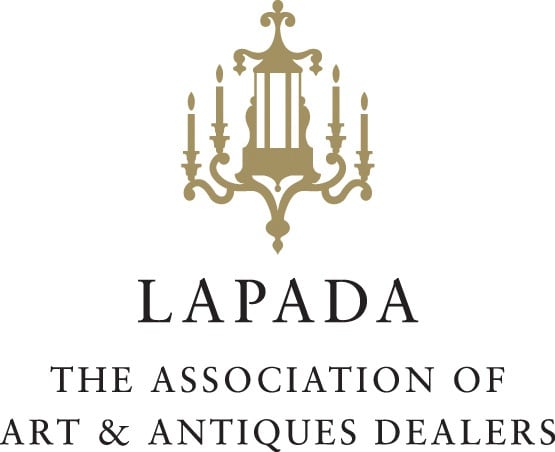Henry Orlik b. 1947
In Cannon Balloons the landscape is made up of rounded green mounds which disappear into the distance like a rhythmical array of army helmets or burial mounds (tumuli or kurgans); it is a landscape but also could be the seabed with the mounds being the pattern made by the waves washing on the sea-bed and the sky, therefore, becomes the sea flowing above. The sea/sky is made up of wave-like clouds which merge in the distance into a knitted grid covering of army camouflage netting. Amongst the helmet-mounds there is a gap between two helmets which is a body of water contained by a dam-like structure, shaped like the edge of a barnacle; in the next valley, just visible, a structure rises like the apparition of a ghostly-fairytale castle. A woven fence – like barbed wire – creates flimsy barriers between some of the helmet-mounds, all of which have the same appearance. It crosses some of the helmets like a woven headdress or crown of thorns.
Above the ground, in the sky-sea float three items, as if set-adrift in water or air. On the left is a torpedo or bomb-like object which is attached to ten round balloons which are like weightless cannon balls; a circular woven wreath-headdress festooned with purple ribbons which flow beneath it as if taken by the wind, floats nearby between the clouds; and a woven six-pronged structure flies above the ground like a large bird with six wings or a sea-creature with six arms, or a woven child’s toy.
The imagery combines symbols associated with war (cannonballs, torpedo, helmets, camouflage netting, barbed wire) with symbols associated with life and death, fertility and folklore, time and celebration (the woven headdress and ribbons, balloons, burial mounds, fairy castle). The juxtaposition of images suggests the randomness and nonsensical quality of war – how it can desecrate a landscape, which becomes a sea of burial mounds, how both sides look the same in army helmets and how amongst the lunacy of death and destruction, fertility and life continues. In particular, the flower crown, which in the 1960s had became associated with peace and love acts as a foil to the army paraphernalia. Similarly, the cannonball balloons suggest the arbitrary nature of war as the balloons could burst at any time dropping the bomb indiscriminately.
Orlik again uses imagery from his mother’s native Belarus. Belarusian straw-weaving has a rich and ancient history and is one of the oldest crafts in the country still maintained with pride today to unite generations and communities to express national and local identity. Straw-weaving and plaiting is included in the life cycle and rituals associated with an agrarian life. It is incorporated in all aspects of life from children’s toys such as mobiles and dolls to elaborate monumental decoration inside houses and churches.
The woven crown is particularly symbolic as a symbol of celebration and fertility often used in particularly in traditional folk-celebrations at weddings and festivals worn with traditional national dress. In Russia the flower crown was influenced by Ukrainian crowns and were used in fortune telling. On the day of Ivana Kupala, one of the major folk holidays of Eastern Slavs which coincides with the Christian feast of the Nativity of John the Baptist and the East Slavic feast of Sain John’s Eve, celebrations are held on the summer solstice near water and on hills. Mass bathing is the custom and it was believed that on this day all evil spirits would leave the rivers, and the water was endowed with revitalizing and magical properties. Wreaths were often used for divination on Kupala Night: if they floated on the water, it meant good luck, long life or marriage. Young women placed their wreaths in the water with a lighted candle, foretelling their romantic future by how the wreath flowed down the river or lake.
